Most of my images are captured within an hour of either dawn or sunset. After all, this is when the real lightshow happens. I choose remote sites that can take some effort to get to, this eliminates human footprints, fences and admission fees. I plan ahead and camp nearby. Most of these places I know intimately by repeated visitation. I take some generalized notes about my visits. For example: Waterfall “B” is a 2pm waterfall because its in a grotto. The sun breaks the ridge above the beach 20 mins after sunrise etc.
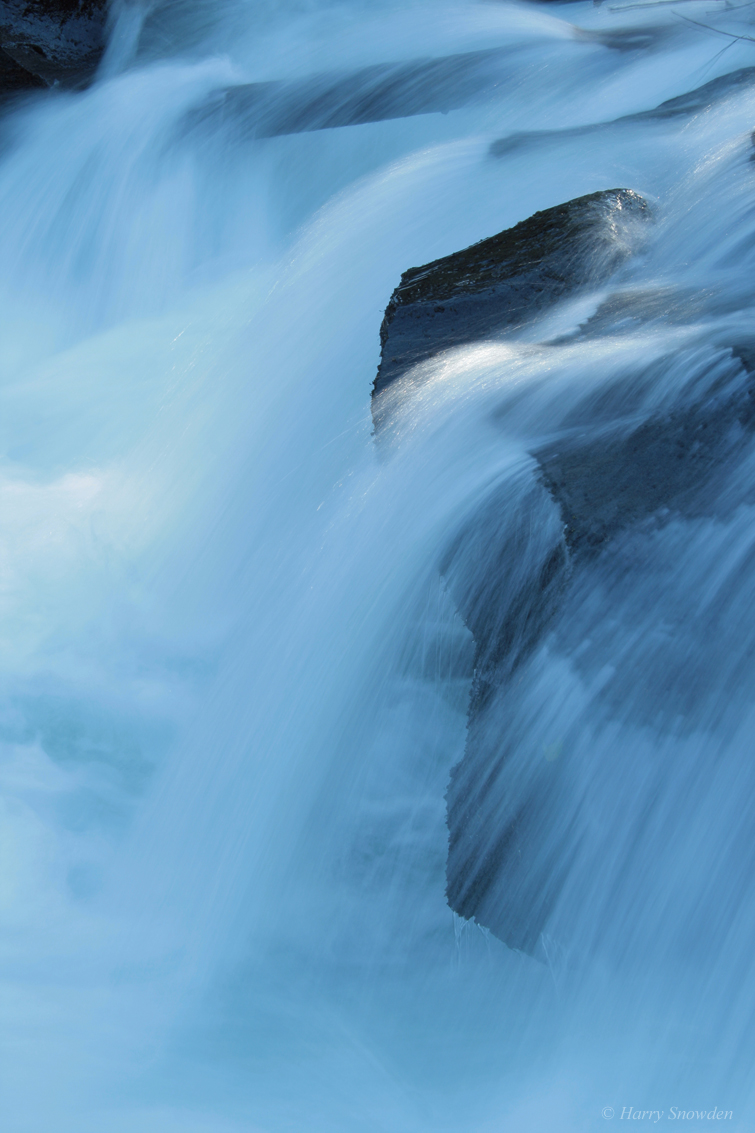
Blue Thunder – Oregon
You will need a tripod, a hat and coffee for this kind of work. In order to keep your camera as still as possible, learn to fire your camera’s shutter by remote control or by using the self-timer. A film camera would need a cable release. A neutral density filter might also come in handy but since you hauled yourself out of bed before dawn, you probably won’t use it.
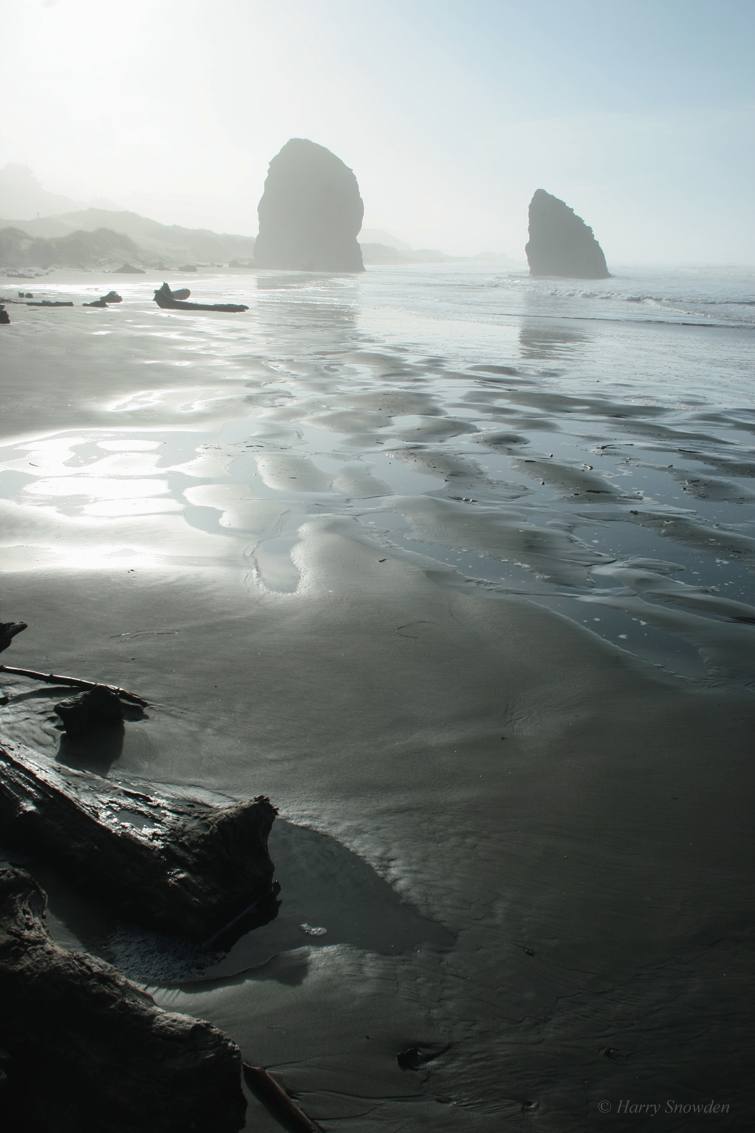
Morning sun and fog – Oregon
There is no doubt that long exposures reveal a hidden beauty in water. And ultra long exposures produce milky cascades of water that pack a wow factor at first, but then lose their luster due to a lack of detail…kinda like too much cotton candy. My favorite shutter speeds are much faster, in the area of 1/5 to 1/8th of a second and seem to hold true for either ocean beaches or mountain waterfalls. This produces the movement I’m looking for and preserves detail. At these speeds you will capture spatters and dances in moving water that you never knew existed.
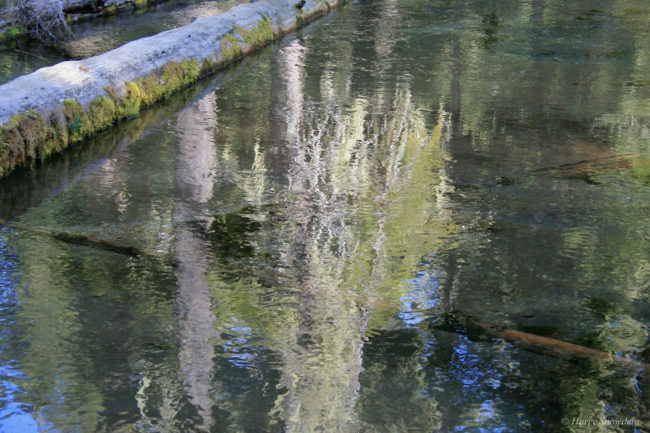
Reflected landscape
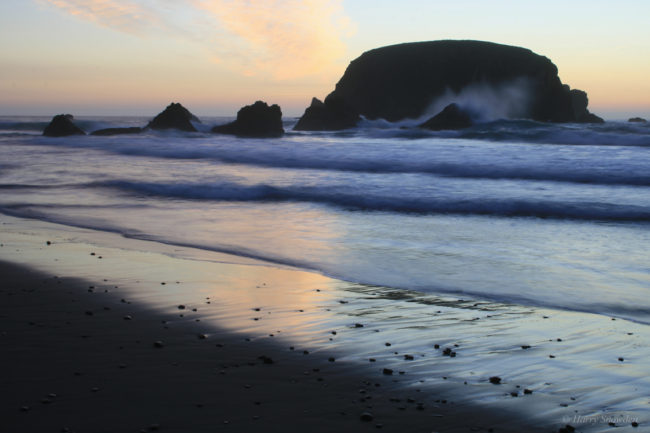
Splash – Oregon
Water is bright, just like snow and sand and will produce underexposed captures. Keep the underexposed, do not throw them away in the field. Sacrificing shadow detail can produce great beauty in the highlights. Bracket your exposures and take them all home. There is no such thing as a proper exposure. Take care of your eyes, limit exposure to very bright light.
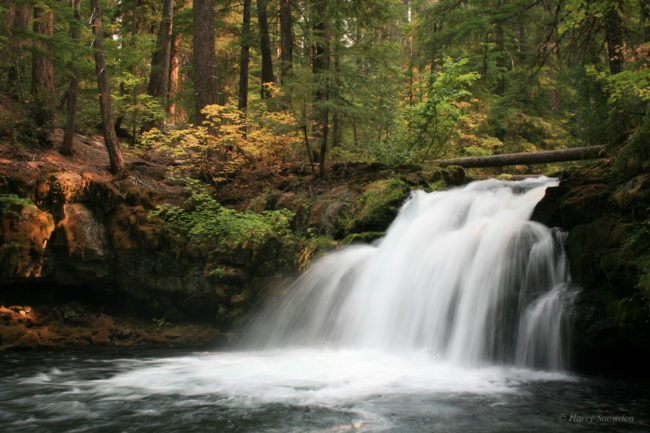
Whitehorse Falls – Oregon
Water has a color, a reflection due to the sky or the surrounding environment. It changes with the angle of incidence.Standing, kneeling or laying flat changes that angle. It can go from brilliant white, to silver, to sky blue. It can capture a perfect landscape reflection from across its surface. That reflection can become painterly by the wind rippling the surface.
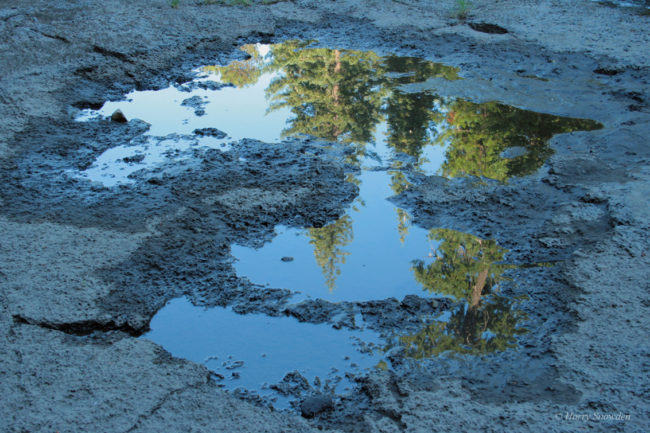
Douglas Fir Forest – Oregon
Producing landscapes reflected in moving water can produce images akin to great impressionist paintings. The more the water moves, the more abstract the landscape becomes. In extreme examples, the reflected landscape can lose it’s visual narrative and the viewer can become confused. Placing a still object in the composition, a log, a overhanging tree branch can add scale and familiarity with the reflection.
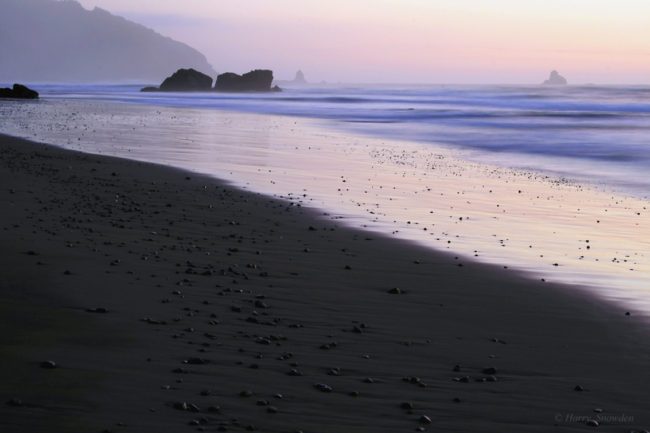
House Rock – Oregon
Water has a season. Waterfalls gush in the Spring and slow in the Fall. The slowing waterfall has more cascades. The ocean beaches in the Summer are warm, stark with light and crowded with people. In the Winter they are deserted, stormy and produce amazing sunsets.
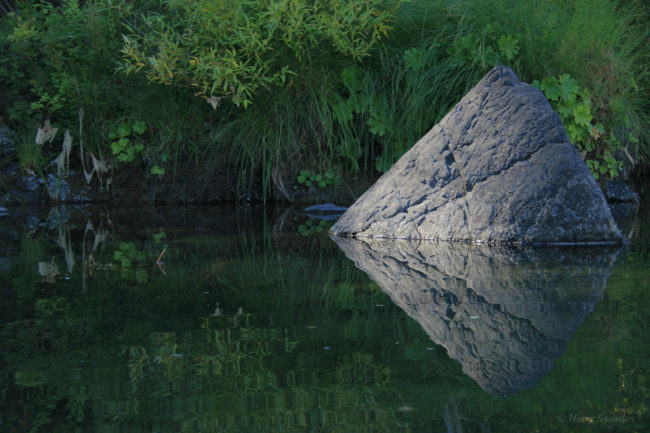
Quiet Moments – Illinois River – Oregon
Harry has a BFA 1988 – Sierra Nevada College Lake Tahoe
Read Harry’s interview with aamora here
See some of his black and white photography on aamora